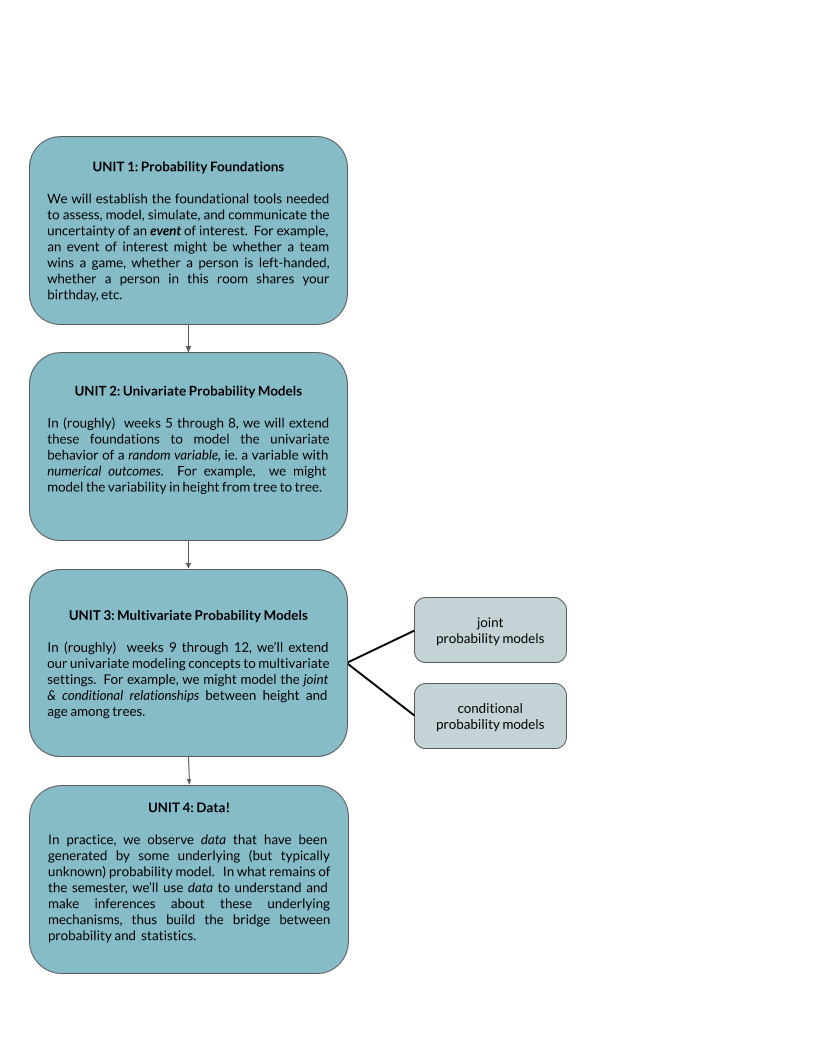Unit Overview

MARGINAL VS JOINT VS CONDITIONAL MODELS
Marginal (Univariate) Models
Let \(Y\) be the height of an adult. The variability in \(Y\) from person to person can be described by some underlying marginal probability model.
Joint Models
Let \(X\) be the wrist circumference of an adult. An underlying joint probability model describes the joint behavior, or typical combinations of \(X\) and \(Y\), that we can observe from person to person.
Conditional Models
There’s also an underlying conditional probability model that describes the conditional dependence of \(Y\) on \(X\), ie. what wrist circumference might tell us about height.
THESE IDEAS ARE NOTHING NEW!
When calculating probabilities of specific events \(A\) and \(B\), we discussed the differences between the following:
| Concept | Description |
|---|---|
| Marginal Probability | \(P(A) = \text{probability A occurs, ignoring B}\) |
| Joint Probability | \(P(A \cap B) = \text{probability A and B occur simultaneously}\) |
| Conditional Probability | \(P(A|B) = \frac{P(A\cap B)}{P(B)} = \text{probability A occurs given B has occurred}\) |
Similary, for RVs X and Y:
| Concept | Description |
|---|---|
| Marginal model | How does X behave, ignoring Y? |
| Joint model | How do X and Y behave simultaneously? |
| Conditional model | How does X behave, given Y = y is known? |